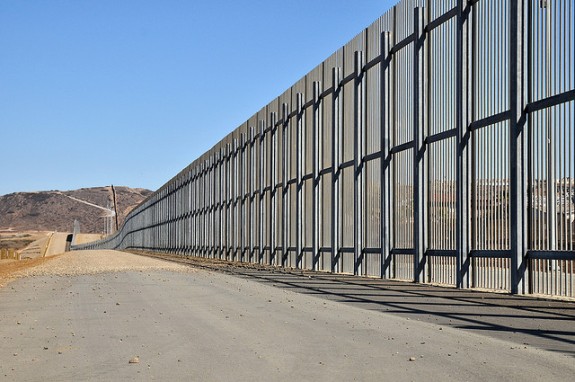The U.S.-Mexico border isn’t what it used to be. That is the over-arching theme of a new report from the Center for American Progress (CAP), entitled Safer than Ever. The report describes the immense buildup in enforcement resources which has occurred along the U.S.-Mexico border since 1993. This buildup has created “a border where the vast majority of attempted entries are identified and a far larger percentage of entrants are apprehended than ever before.” Moreover, the increase in border enforcement has coincided with falling rates of violent crime along the border, and—over the past few years—a dramatic decline in the number of unauthorized immigrants attempting to cross into the United States. In other words, border enforcement is at an historic high and unauthorized immigration is at an historic low. This creates, as the CAP report puts it, “a unique opportunity” to redesign the broken U.S. immigration system and finally confront the fact that 11 million unauthorized immigrants now call the United States home.
The CAP report points out that enforcement along the U.S.-Mexico border is worlds away from what it was in the early 1990s. For instance:
- In just the five-year period from Fiscal Year (FY) 2007 to FY 2012, the number of Border Patrol agents has grown from 14,923 to 21,370. Most are stationed at the U.S.-Mexico border.
- In Arizona, where most unauthorized border crossings now take place, there are 5,200 Border Patrol agents, more than 900 Customs and Border Protection (CBP) officers, and more than 130 Air and Marine agents.
- President Obama dispatched 1,200 National Guard troops to the U.S.-Mexico border to help spot unauthorized border crossings.
- There are now 300 miles of vehicle barriers and 350 miles of pedestrian fencing along the U.S.-Mexico border.
- Arizona has roughly 60 remote surveillance systems deployed along its border with Mexico.
However, these heightened enforcement measures have been implemented in the absence of reforms that would fix the broken U.S. immigration system which spurs most unauthorized immigration. As a result, the border buildup has had two unintended consequences that have proven to be very deadly:
- As migrants cross the border in more remote (and dangerous) locations, away from heavily fortified areas, more of them are dying. The Border Patrol puts the death toll at 4,375 between 1998 and 2009.
- Since crossing the border is so difficult now, the services of a smuggler are essential in making the journey. This has driven up the fees that smugglers charge and the profits that they make. Profits are so high, in fact, that the Mexican drug cartels—infamous for their violence and ruthlessness—have gotten into the smuggling business and now dominate it.
These unintended consequences notwithstanding, the immense buildup of personnel and resources at the border has undoubtedly contributed to the large decline in apprehensions over the past few years. However, as the CAP report notes, that there are other factors which must be taken into account:
- The severe economic downturn in the United States that began in 2008, which effectively dried up the job market that has long drawn unauthorized immigrants to this country.
- The recent expansion of economic and educational opportunities in Mexico.
- Demographic changes within Mexico; namely, a declining birth rate.
Regardless of which factors have played the biggest role in reducing unauthorized immigration to the United States from Mexico, the fact remains that unauthorized immigration is way down, border enforcement is way up, and now is the time to deal with the 11 million unauthorized immigrants who already live and work here. The CAP report sensibly recommends a legalization program for the unauthorized, as well as more flexible limits on both employment-based and family-based immigration in the future—so that we don’t find ourselves in the same position again 20 years from now.
Photo by jonathan mcintosh.
FILED UNDER: undocumented immigration



